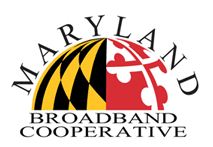SU's ESRGC Completes Broadband Mapping Project
 SALISBURY, MD---Salisbury University’s Eastern Shore Regional GIS Cooperative (ESRGC) has played a key role in the Maryland Broadband Mapping Initiative, which has been called one of the top three such projects in the country by the National Telecommunications Information Administration.
SALISBURY, MD---Salisbury University’s Eastern Shore Regional GIS Cooperative (ESRGC) has played a key role in the Maryland Broadband Mapping Initiative, which has been called one of the top three such projects in the country by the National Telecommunications Information Administration.
The ESRGC has been working on its $2.12 million effort for the Maryland Broadband Cooperative (MdBC) for the last five years.
“We created a base of information about broadband internet capabilities in all parts of the state that can be built on through the years and used to fuel good decision-making by governments and private industry,” said Dr. Michael Scott of SU’s Geography and Geosciences Department, who also directs the ESRGC. “In addition, we assembled and developed a group of people that has the skillset to engage with businesses and governments on how to expand broadband capacity.”
In 2009 MdBC was designated by Governor Martin O’Malley to collect, validate and map service coverage areas and market performance of the state’s internet providers for the broadband mapping initiative, funded by the American Recovery and Reinvestment Act.
Over the past five years MdBC and its partners, including SU’s ESRGC, have collected broadband availability data from more than 50 services providers and 13,500 community anchor institutions; launched an interactive website that allows consumers to learn about broadband availability and speed capabilities at their address; and, with the assistance of SU student interns, conducted thousands of wireless availability tests statewide.
They developed a Broadband Connectivity Ranking index to improve understanding among decision-makers; completed four comprehensive broadband plans for rural areas of the state; and helped enable communities, businesses, and governments to connect to existing broadband resources.
Some 15-20 graduate and undergraduate students from SU assisted over the years, Scott said.
Continuing beyond these efforts, the ESRGC is now involved with a new state initiative to build FirstNet, a wireless broadband network for first responders that eventually will become part of a nationwide platform for emergency and public safety communications.
“All the work that we did on remote wireless testing throughout the state is now helping Maryland be at the front of the national pack in regard to how far ahead we are with the rollout of this network,” Scott said.
Scott and the ESRGC also will continue with broadband capacity building efforts, helping businesses, neighborhoods and governments expand their capabilities.
For more information, call 410-543-6030 or visit the SU website at www.salisbury.edu.
